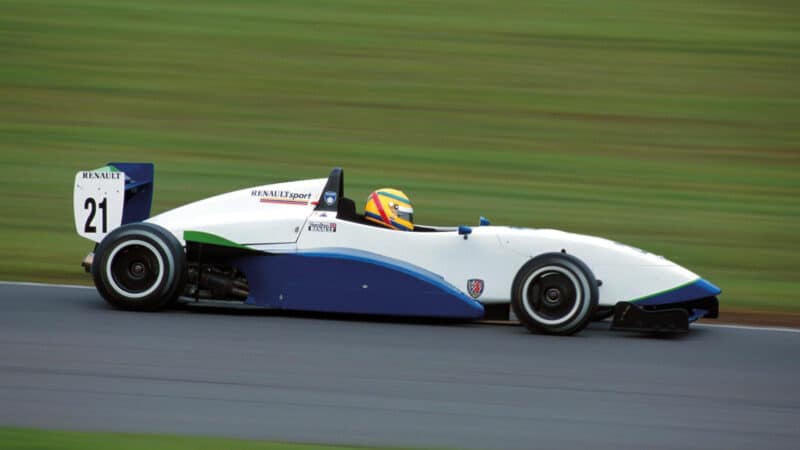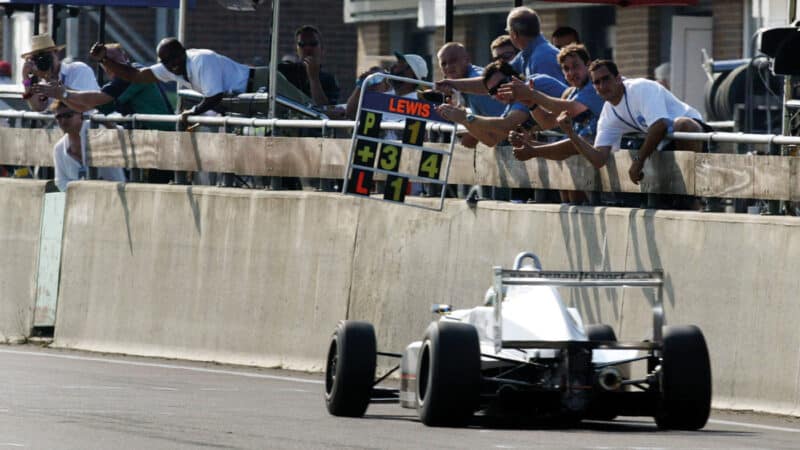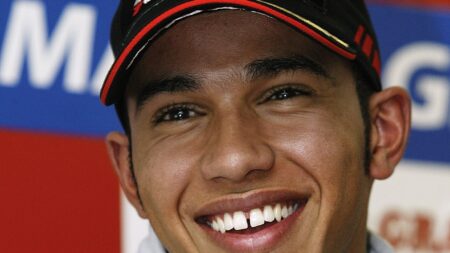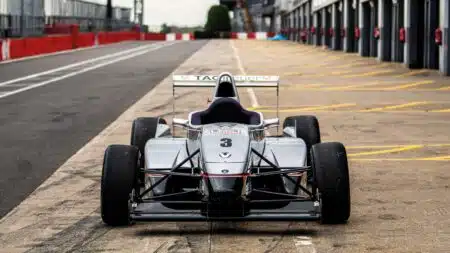“You’ve got to bear in mind that this guy had never driven a car before, even a road car,” says then-Manor team manager Tony Shaw. “I remember Marc having to drive him around and teach him how a clutch worked! It was really in at the deep end for him, especially using the gear lever and all that sort of stuff.
“You could tell straight away he wasn’t scared of it. It was a fairly bumpy experience at Mallory, especially into the first corner – there was a big old jump into there that set the car leaping about a bit.”
The precocious Hamilton was near the pace straight away. As a result, Shaw wasn’t the only one impressed. Veteran manager Booth was also taken aback by what he saw, despite a small hiccup.
“I said first time round, ‘Bloody hell this lad is confident!’” Booth remembers. “He wasn’t flat into Gerards, but he was bloody on it, really on it. For somebody who hadn’t really driven a road car or a gearbox kart, his gear changes were spot-on. Unfortunately he then lost it, and took the back of the car off.
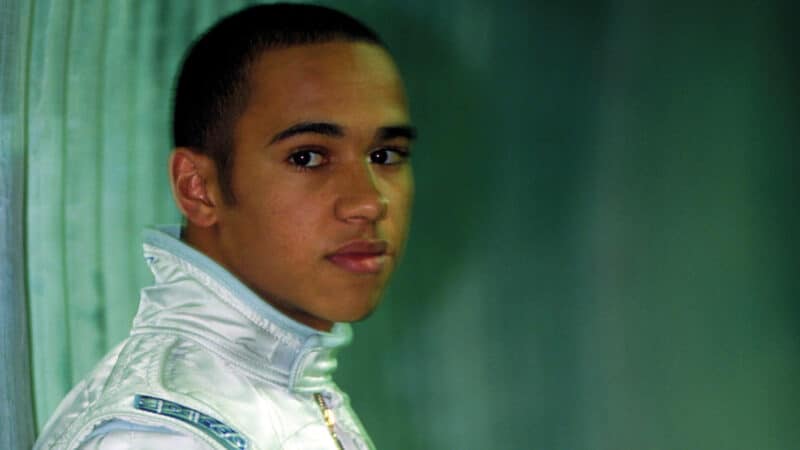
Here’s Hamilton at 16 in the 2001 Formula Renault Winter Series at Rockingham – his first single-seater race
“We set about rebuilding it, and it took the best part of the day to get everything back together. I think we got him out for the last hour, and the very first lap, he was right on it again. No nerves or concerns, just really confident and right back on it. The guy was bloody quick.”
Hamilton had turned heads, not just at the top end of the Manor squad, but throughout the team.
“He was outstanding, you could tell straight away,” said mechanic Simon Finnis to The Yorkshire Post in 2021.
